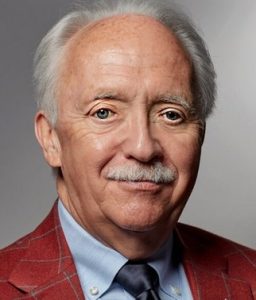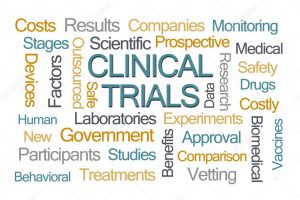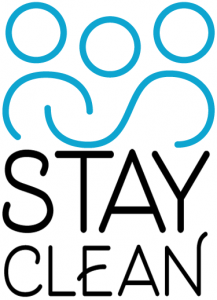Old Timers For A Change
June 11, 2021 By Gene Gilchrist, Ph.D., Chief Executive Officer
By Gene Gilchrist, Ph.D., Chief Executive Officer
Stay Clean
gene.gilchrist@stayclean.com
A recent exchange in “Dear Annie” with “Follow the Data” revisits an important, current discussion in addiction treatment. That this discussion is occurring in more popular sites rather than technical journals is a positive sign. The contention surrounding the discussion seems unnecessary and unhelpful.
“Follow the Data” argued that people suffering from substance use disorder (addiction to the lay person) should not wait to “hit bottom” and then follow a program of strict abstinence. The writer argued that contrary to common wisdom it is not necessary to wait for such extreme consequences and that there were many alternatives for recovery some of which allowed certain individuals to drink safely. Annie thanked the writer for the letter adding that twelve step programs “work if you work it”. That, of course, is a frequent admonishment in twelve step circles.
 The case “Follow the Data” makes is not new. As reviewed in “The Irrationality of Alcoholics Anonymous” (The Atlantic, April 2015) and US of AA by Joe Miller (Chicago Review Press, 2019) among many others, there is a case being made that recovery advocated by AA and the many programs it has spawned has not been effective in any broad-based fashion. Further, Mr. Miller argues that early proponents of AA, specifically Marty Mann, have brain washed the nation that twelve step programs are the only way and in doing so stifled biomedical research into this brain disease.
The case “Follow the Data” makes is not new. As reviewed in “The Irrationality of Alcoholics Anonymous” (The Atlantic, April 2015) and US of AA by Joe Miller (Chicago Review Press, 2019) among many others, there is a case being made that recovery advocated by AA and the many programs it has spawned has not been effective in any broad-based fashion. Further, Mr. Miller argues that early proponents of AA, specifically Marty Mann, have brain washed the nation that twelve step programs are the only way and in doing so stifled biomedical research into this brain disease.
The admonition in Annie’s answer is a refrain from many inside twelve step programs. It is thoroughly understandable that “old timers” in programs like AA and NA (as the saying goes, people who did not drink or use and grew old) might feel under attack for a program that does, indeed, work as evidenced by them and millions of others. Since they, generally, did “hit bottom”, and they are now clean and sober for some time, they feel justifiably protective of a way to recovery that in many instances literally saved their lives. Today more than 2,000,000 people will attend an AA or NA meeting, and many will achieve lengthy periods of recovery through abstinence. It appears, then, that “it does work if you work it”.
Clearly AA and similar twelve step programs have been effective for millions since 1935 and until recently were the most widely successful and nearly sole approach available. Those who recovered (many would say recovering) ardently guard and proclaim the success of those programs. It seems only reasonable that the experience of these millions transitioning from a life of ever declining addiction to productive, loving and spiritually rich lives would result in a certain zeal.
Further, individuals suffering from addiction (and let us not ignore their loved ones, the codependents) can and do find solace, community, and achieve recovery in twelve step programs. The oft criticized rigor of those programs seems small price to pay if one has descended the curve toward hitting bottom. Despite the criticism that AA does not work for too many, the experience of patients in the current approach largely based on the twelve steps is not outside other disease treatments. There are many diseases for which treatment is a probability science as opposed to a definite cure. In this light, the estimated recovery rates of 50% who try treatment, and the repeated applications of treatment estimated at five or six repetitions prior to recovery, are not outside the experience in other diseases.
At the same time, it is likely true as Gabrielle Glaser noted in The Atlantic that, “Nowhere in the field of medicine is treatment less grounded in modern science”. Further, given that today only 12% of all individuals suffering from substance use disorder ever encounter any form of treatment and only 6% achieve continuing recovery it would appear that additional avenues to accessing treatment and, perhaps treatment itself, are necessary. Addiction was defined as a disease by the American Medical Association in 1956 (alcoholism was first and drug addiction came into the definition in the 1970s). Although Mr. Miller reviews information suggesting that this designation was controversial, that designation continues sixty-five years later. In medicine there are very few diseases where 88% of the sufferers are not afforded treatment arguing that twelve step approaches have not proven scalable. It is estimated by the Substance Abuse and Mental Health Service Administration that there are 27 million persons suffering from substance use disorder. This compares with an estimated 32 million diabetics and 23 million Americans diagnosed with cancer. Given the prevalence and suffering caused by the disease, a lack of treatment availability (that is certainly attributable to many factors), and 6% recovery rates, research and application of additional, evidenced based treatment is very much needed.
Let us recognize that there is an issue with the “stakes” involved with the research into addiction treatment and trying new methods. In the usual clinical trial research a new therapy goes through three “stages” and often continued study (fourth stage). Each stage is designed to show the safety and the efficacy of the therapy prior to and then continuing after that therapy has been approved for widespread use for those suffering from the disease. Oftentimes the trial participants have no other alternative and the new therapy may be a last chance for their treatment although that is not always the case.
In this disease there is a therapy, and we know that it can work. We need to be careful that the oft repeated phrase “it works if you work it” does not become a way of blaming victims who, after all, are estimated to be 50% of those who try recovery. However, we know that there are millions for whom this treatment works. As the book Alcoholics Anonymous notes, “ If you want what we have and are willing to go to any lengths to get it”, and “Rarely have we seen a person fail who has thoroughly followed our path”. This treatment is proven to work for many sufferers. While there is need for research and alternatives, the risk needs to be calculated against an approach that does work. As is said in AA circles, “If you don’t drink you can’t get drunk”. As we approach clinical trials, then, let us measure the risk against our knowledge that there is a path that is effective albeit to date for a small percentage of the afflicted.
 In the case of many clinical trials the risk is to the participant and is not shared with others. The chronically ill for whom the trial is a last resort have little remaining to lose nor do their loved ones or their dependents. In the case of those volunteers who are not critically ill they may jeopardize their dependents and their loved ones’ loss, but they do not share the risk beyond a small group whom one assumes have been consulted. The alcoholic or the drug addict who volunteers for a new therapy may be sharing the risk widely. Since their disease often results in a loss of self-control or even full consciousness the risk from their behavior may be shared with those who are not even aware of the trial to say nothing of having volunteered. The risk of driving under the influence is an example. Of course, risk in trials is never completely absent and all kinds of risks are managed in trial research design and human subjects review.
In the case of many clinical trials the risk is to the participant and is not shared with others. The chronically ill for whom the trial is a last resort have little remaining to lose nor do their loved ones or their dependents. In the case of those volunteers who are not critically ill they may jeopardize their dependents and their loved ones’ loss, but they do not share the risk beyond a small group whom one assumes have been consulted. The alcoholic or the drug addict who volunteers for a new therapy may be sharing the risk widely. Since their disease often results in a loss of self-control or even full consciousness the risk from their behavior may be shared with those who are not even aware of the trial to say nothing of having volunteered. The risk of driving under the influence is an example. Of course, risk in trials is never completely absent and all kinds of risks are managed in trial research design and human subjects review.
One will also be left to wonder the motivation of the trial participant given that we know that twelve step approaches and abstinence can work. No doubt many who are not successful in twelve step programs are those who want to continue to drink or use in order to continue a lifestyle they find pleasing even if it is “the drug that is talking”. This argues that research should focus in part on the motivations of the active addict. On first glance this may sound contradictory – “ask the person with the life-threatening behavioral health disease what treatment they would prefer”? However, that is not so uncommon. In the case of prostate cancer, for example, there are several alternatives including radiation therapies, surgery, immunotherapy treatments, and even “watchful waiting”. The patient is choosing among risks and the side effects of various treatments with the guidance of trained health care professionals. Again, the risk here is to the patient and his loved ones where in the case of addiction the risks may be more broadly shared. Nevertheless, it seems important that research engage the addict in their choices and attitudes toward treatment options.
While this research occurs and the results enter mainstream treatment there is no need to criticize twelve step programs, nor their ardents, or to discourage people from seeking help there. These programs have worked for millions and ended suffering for them and their loved ones. Even if we were to accept Mr. Miller’s criticism of Ms. Mann and the history, there is no evidence today of a concerted, organized effort by twelve step ardents to limit research into new methods of treatment. Old timers will not, likely, abandon their new-found lives for trials and they will be there to help anyone who seeks this path.
To the extent that old timers are a barrier to this research as Mr. Miller suggests then let them become not only not the resistance but advocates. Those who have benefitted from twelve step approaches might recognize, too, that all too few sufferers achieve recovery and that new, researched, tested approaches will help everyone. If and when research creates more widely available and effective treatment that will be a day of great rejoicing for 27 million people and an estimated 215 million loved ones. Let us not hamper the arrival of that day.
For many “old timers”, however, it is both unfortunate and unnecessary that the tone in that exchange becomes adversarial in the Dear Annie exchange, in Mr. Miller’s writing, and in many other exchanges. The debate is healthy; it is the contentiousness that is unhealthy.
 JOIN THE DISCUSSION
JOIN THE DISCUSSION
Add your thoughts about Old Timers For A Change by submitting your comments in the reply box below. All comments are moderated prior to being posted on the web site. Thank you.
Stay Clean is a groundbreaking approach to create additional opportunities for addicts, alcoholics and their loved ones to find an answer. Created by recovering addicts and alcoholics, and people with experience in codependent relationships, Stay Clean is a cloud based, easily accessible, 24 hour community of recovering people and their loved ones helping each other and offering a comprehensive array of recovery services online. Members will access online Recovery Meetings, directions to find on site 12 step meetings in their area, and interact with each other in forums to find answers to their questions. There are proprietary treatment options similar to distance education and face-to-face counseling via telehealth. Counselors and peer coaches will always be highly qualified, highly credentialed, very experienced.
Finally, and perhaps most importantly, members will find easily accessible resources to work through life skills such as relationship building, parenting, career and employment, legal issues and financial management to name a few – they will find help with those kinds of issues that suffered the most during their years of active addiction.
For more information, please visit the Stay Clean web site at https://www.stayclean.com/.
ABOUT THE AUTHOR
Gene Gilchrist, Ph.D. is the Chief Executive Officer of Stay Clean a cloud-based clinical treatment and recovery community headquartered in Louisville, Kentucky.
SUBMIT A GUEST BLOG
Are you interested in writing a guest blog for The Recovery Word? Click here for additional information.

